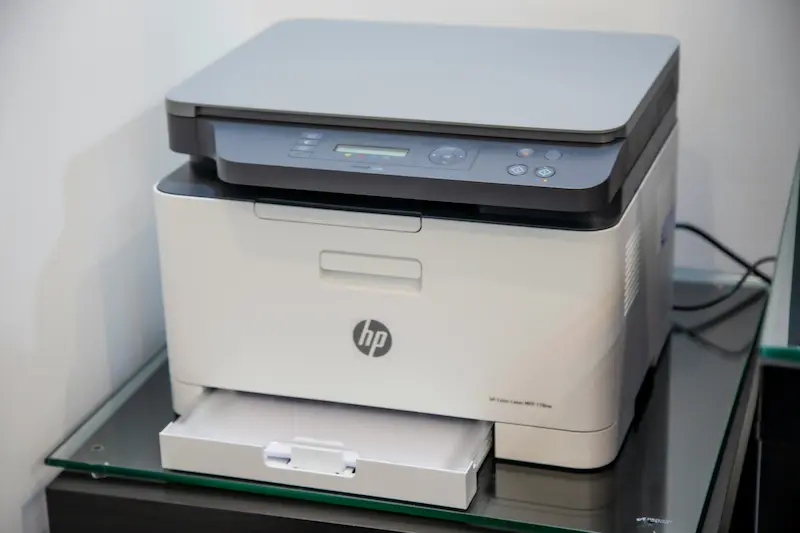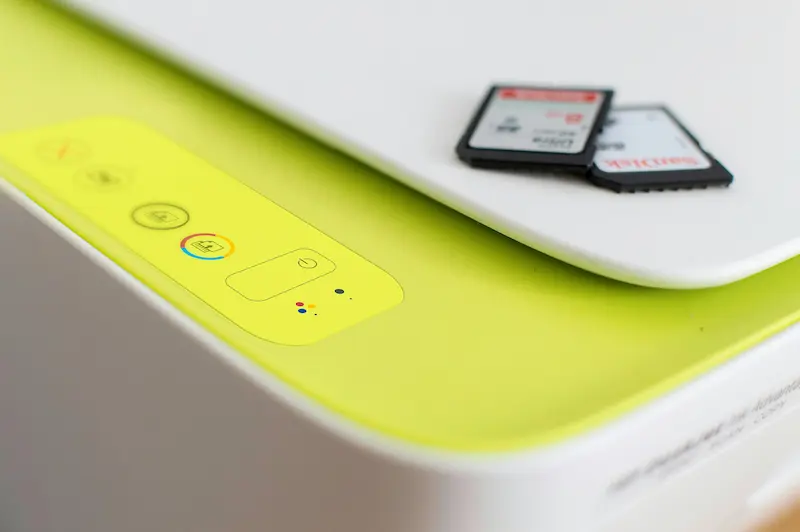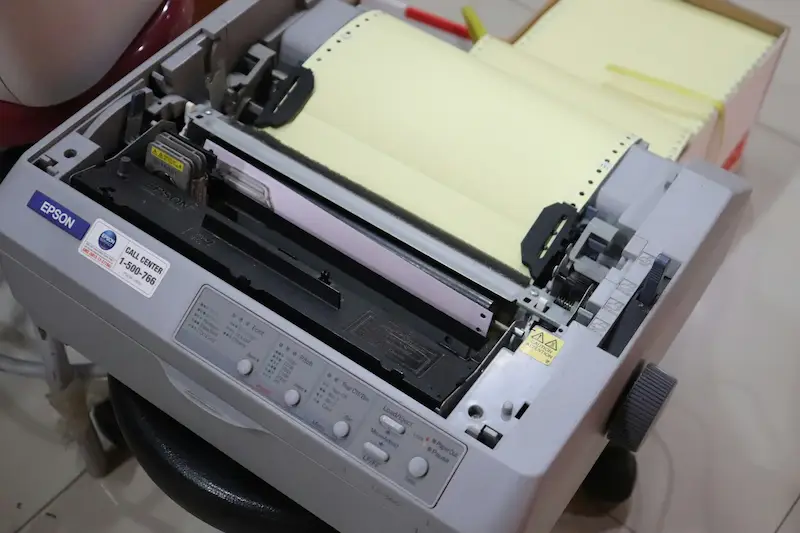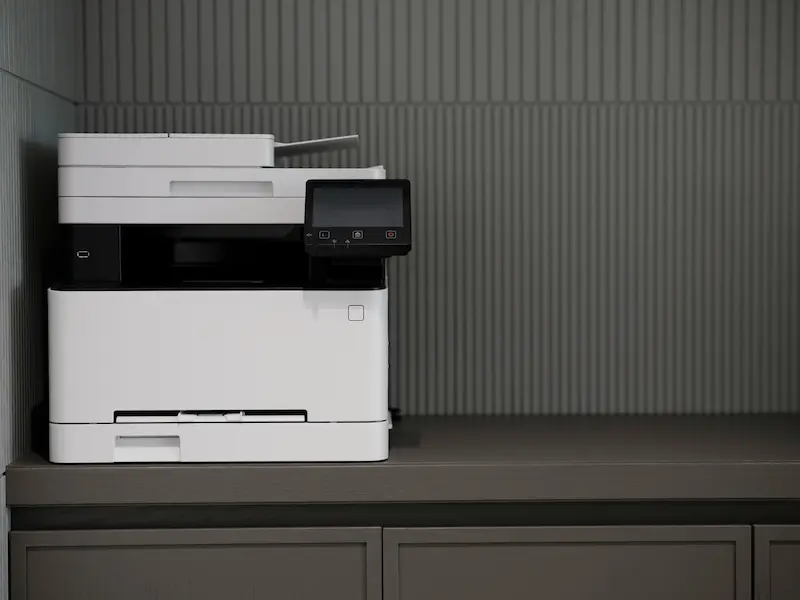Printers are indispensable in corporate environments, but they can encounter various issues that disrupt workflow. Different types of printers—laser, inkjet, compact, and thermal—have unique challenges and troubleshooting methods. This article provides a comprehensive guide to fixing common issues for each printer category.
Laser Printers

Common Issues and Solutions:
- Toner Smudging
Issue: Printed documents have smudged toner or streaks.
Solution:
- Check Toner Cartridge: Ensure the toner cartridge is properly installed. If it’s running low, replace it.
- Clean Fuser Unit: The fuser unit might be dirty. Clean it according to the manufacturer’s instructions.
- Print Settings: Ensure the print settings match the paper type. For example, using plain paper settings for glossy paper can cause smudging.
- Paper Jams
Issue: Paper jams are frequent, interrupting print jobs.
Solution:
- Inspect Paper Path: Remove any jammed paper by following the path from the input tray to the output tray.
- Check Rollers: Clean and inspect the rollers. Worn-out rollers might need replacement.
- Load Paper Properly: Ensure the paper is loaded correctly and not exceeding the tray capacity.
- Poor Print Quality
Issue: Prints have faded text or inconsistent density.
Solution:
- Toner Level: Check and replace the toner cartridge if necessary.
- Print Density Settings: Adjust the print density settings in the printer driver.
- Maintenance Kit: Replace the maintenance kit if the printer’s usage is high, as it includes essential parts like rollers and the fuser.\ Figure 1: Cleaning Laser Printer Rollers
Inkjet Printers

Common Issues and Solutions:
- Clogged Print Heads
Issue: Prints have streaks or missing colors.
Solution:
- Run Print Head Cleaning: Use the printer’s utility software to perform a print head cleaning cycle.
- Manual Cleaning: If automatic cleaning doesn’t work, manually clean the print heads with a lint-free cloth and distilled water.
- Ink Smudging
Issue: Ink smudges on the printed page.
Solution:
- Allow Drying Time: Ensure the printed pages are given enough time to dry before handling.
- Check Paper Type: Use the correct type of paper for your printer. Some paper types dry faster than others.
- Slow Printing
Issue: Printing is slower than expected.
Solution:
- Draft Mode: Set the printer to draft mode for faster prints if high quality is not necessary.
- Update Drivers: Ensure the printer drivers are up-to-date.
- Reduce Print Quality: Lower the print quality settings in the printer driver to speed up the printing process.\ Figure 2: Cleaning Inkjet Printer Print Heads
Compact Printers

Common Issues and Solutions:
- Battery Issues
Issue: The printer does not power on or has a short battery life.
Solution:
- Charge Fully: Ensure the printer is fully charged before use.
- Replace Battery: If the battery no longer holds a charge, it may need to be replaced.
- Power Source: Use the recommended power source to avoid battery issues.
- Connectivity Problems
Issue: The printer cannot connect to devices.
Solution:
- Bluetooth/Wi-Fi: Ensure Bluetooth or Wi-Fi is enabled and the printer is in pairing mode.
- Update Firmware: Keep the printer’s firmware updated to support the latest connectivity standards.
- Check Compatibility: Verify that the device you are trying to connect is compatible with the printer.
- Paper Feeding Issues
Issue: Paper is not feeding correctly through the printer.
Solution:
- Align Paper Properly: Ensure the paper is aligned correctly and not wrinkled.
- Check Paper Size: Use the correct paper size as specified by the printer’s manual.
- Clean Rollers: Clean the paper feed rollers to ensure smooth paper feeding.\ Figure 3: Connecting a Compact Printer to Bluetooth
Thermal Printers
Thermal printers are commonly used for printing receipts, labels, and barcodes. They are known for their speed and reliability.
Common Issues and Solutions:
- Faded Prints
Issue: Prints are faded or incomplete.
Solution:
- Check Paper: Ensure you are using the correct type of thermal paper. Expired or incompatible paper can cause faded prints.
- Clean Print Head: Clean the print head with a thermal printer cleaning pen or alcohol swab.
- Adjust Print Density: Increase the print density settings in the printer driver or on the printer’s control panel.
- Paper Jams
Issue: Paper gets jammed frequently.
Solution:
- Load Paper Properly: Ensure the paper roll is loaded correctly and the paper path is clear.
- Inspect Rollers: Check the rollers for wear and clean them regularly.
- Correct Paper Type: Use the recommended type of thermal paper to avoid jams.
- Lines on Prints
Issue: Printed documents have lines or streaks.
Solution:
- Clean Print Head: Lines often indicate a dirty print head. Clean it thoroughly.
- Replace Print Head: If cleaning doesn’t help, the print head might be damaged and need replacement.
- Check Ribbon: For thermal transfer printers, ensure the ribbon is correctly installed and not wrinkled.\ Figure 4: Cleaning Thermal Printer Print Head
General Maintenance Tips
Regardless of the printer type, regular maintenance can prevent many common issues:
- Keep Firmware Updated: Regularly check for and install firmware updates to improve printer performance and compatibility.
- Use Quality Supplies: Use high-quality paper, ink, and toner cartridges recommended by the manufacturer.
- Clean Regularly: Regularly clean the printer, including the print heads, rollers, and paper trays, to prevent dust and debris buildup.
- Proper Storage: Store printers in a clean, dry place to avoid environmental damage.
Conclusion
Each type of printer—laser, inkjet, compact, and thermal—comes with its unique set of challenges. By understanding common issues and their solutions, you can ensure your printers operate smoothly and efficiently, minimizing downtime and maintaining productivity in your corporate environment. Regular maintenance and proper handling are key to extending the lifespan of your printers and ensuring high-quality output.
